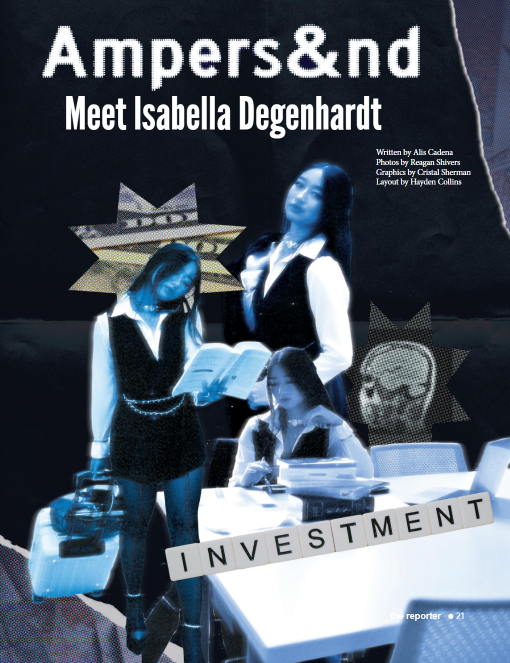
Only a few months back, situated in the bright, bustling epicenter of New York tourism, Times Square, the 2023 College Media Association Conference should have been, as their very own tagline puts it, “the experience of a lifetime.” However, recalling any concrete influential moments from the three-day affair proves more difficult than it should be. Housed in the towering New York Mariott Marquis, this year’s CMA Conference was set to be four floors of nonstop journalistic listening and learning. With keynote speakers like that of Ramon Escobar, CCN’s Senior Vice President of Talent Recruitment, and Marc Lacey, current managing editor of The New York Times, the conference was set to be a promising outlet for experienced, diverse educators to instruct hundreds of college students how to grow in the field. Though, why is it then that only two months later, it is difficult to pinpoint many impactful events and talks that were purposefully set up to leave an impression?
A probable answer resides in the overall lack of representation cultivated by the conference. Not to say that the event was completely devoid of diversified experiences and speakers, but for a field that preaches subversion and outside of the box thinking, the conference unwaveringly stayed within limiting binaries. Firstly, the line up of speakers, professors and professionals from areas all over the nation east to west seemed promising, but the majority of diversity in ideas and identity were found in the keynote speakers and not much else. The conference communicated an overwhelmingly white, male-dominated view of media studies that may reflect the current culture of journalism itself, but nonetheless undercut any boasts of well-rounded representation. Though there was admittedly a good ratio of men and women leading talks, there was no explicit representation of those that do not fall within gender binaries, not only making some of the presentations less welcoming, but also less engaging. It created an environment in a lot of the sessions that silenced nonconforming students and even made some topics feel altogether unapproachable. Not to mention, few speakers, especially in the career talks, spoke about how privilege, whether race, class, sex or gender, greatly effects the circumstances it takes to enter into the field of journalism. Overall, the avoidance of addressing identity created blind spots in a multitude of talks and discouraged open expression.
But in addition to a lack of diversity of identities, there was also a deficiency in terms of what was actually being discussed. Coming from the perspective of Stetson’s Hatter Network and its multiplicity, the lack of rounded out education in more than one branch of media offered by the conference was disappointing to say the least. Admittedly, there were a few sessions regarding radio, broadcasting and creative arts, but the conference was extremely skewed to concern writing and editing above other aspects of media. Even in terms of the actual writing that was being addressed in the talks, there was a clear hierarchy that prioritized newspaper and magazine writing above that of literary magazines and alternative creative publications. Granted, the instruction in these writing enhanced talks was for the most part very helpful, but that does not diminish the fact that a lot of other branches of media were left feeling unfulfilled. And with a conference that costs hundreds of dollars for students to attend, you would hope that you are getting instruction that addresses all aspects of your publication, not just your writers’.
However, there were still a few highlights that resulted from the conference. As aforementioned, the keynote speakers, with their experience and prestige, offered extensive career knowledge and background into what it was like to obtain the position they currently hold. And though some of the most impactful knowledge was elicited by student questioners themselves, each keynote session was engaging, honest, and invited feedback. Additionally, many of the sessions that removed themselves from broad concepts and the vast nature of the journalistic field, simplifying the talk to hyperfocus on mechanics of writing and pitches were extremely methodical and effective. For example, sessions on active writing and developing a beat were centered on how to structure your writing and stories in a productive way. This simplification was objective and did not try to cover too much in too little time, something several other talks struggled with. The sessions that identified clear objectives, the tools needed to get there, but most importantly engaged with the students are the ones worth remembering. Something as miniscule as allotting time for open discussion, questions or even practice examples allowed students to engross themselves in the content and critically put into practice some of the tools they were expected to absorb in the 50-minute session.
Ultimately, the reverberations of this year’s CMA Conference were not as impactful as they ought to have been. Several issues arose from the event’s limiting scope of diversity in speakers and subjects, sections of the event remembered either for successes or shortcomings. It should have been a conference worthy to be remembered as a whole, not just for its highs and lows. With a few talks fixated on constructively critiquing and engaging with students, it is evident that the ability to create something lasting and fruitful is there. But a conference designed to educate students across the country on all forms of media cannot just be a few good sessions. The College Media Association needs to foster a community that is engaging and diverse to not only involve more students that attend, but also to account for the shift in journalism and representation with this new generation.





